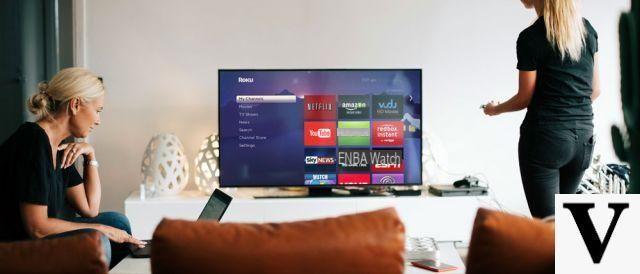
You've just spotted a beautiful screen in the store, and you wonder if this size really fits what you need in your living room. If your wall is surely large enough to accommodate the screen, other criteria must be taken into account to enjoy the qualities of your TV in the best conditions.
Diagonal, screen definition, distance you are from the TV or the type of content, are all criteria to take into account before going to the checkout to buy the screen that caught your eye. We take stock to clarify everything.
How to choose the size of your TV screen?
Choosing a television is an important decision in the sense that it is not the kind of equipment that you renew every two years. Once you have your TV, you will probably keep it for the next five to ten years.
All the more reason to make the right choice.
Size, format, definition, resolution: be careful not to confuse
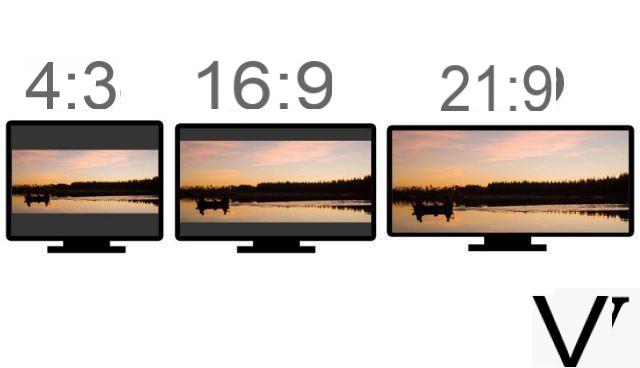
To make sure you don't get tangled up in your brushes, here's a reminder of the different terms you shouldn't confuse when choosing your screen.
- Size : expressed in inches, it represents the diagonal of the screen. Example: 40 inches.
- The format : also expressed in inches, it represents the ratio between the width and the height of the screen. Example: a TV with a size of 40 inches can therefore have a 4: 3 or 16: 9 or 21: 9 aspect ratio.
- The definition : it is the number of pixels present on the screen. Example: 1920 x 1080 pixels (Full HD).
- Resolution : it is the ratio between the size of the screen and its definition, expressed in pixels per inch (ppp). In everyday language, we often speak of "display finesse". Example: 55 dpi for a screen with a size of 40 inches and a Full HD definition.
What program do you watch on your television?
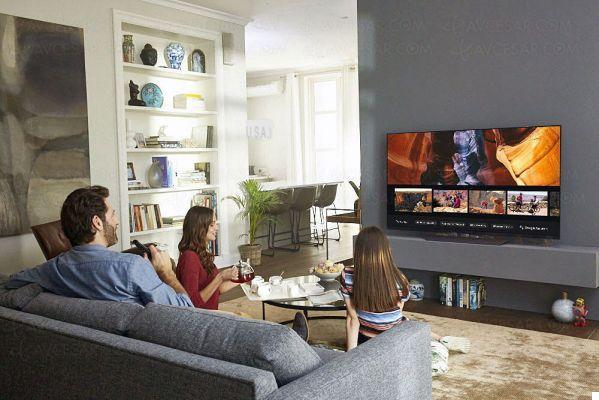
Are you more of JT and entertainment shows or animal documentaries and movies? Obviously, you'll be able to watch everything, no matter what your screen, but the types of content you watch the most can help you choose.
If you have a Blu-Ray player and a 4K Netflix subscription, this will automatically direct you to a 4K Ultra HD TV to fully enjoy it.
If you mostly watch movies, you might be able to enjoy the 21: 9 aspect ratio without black borders.
Finally, if the television is for the living room or for a bedroom, you will probably not choose the same diagonal.
Ask yourself the right questions, and the answers will come of themselves.
How to calculate the size of your TV screen?
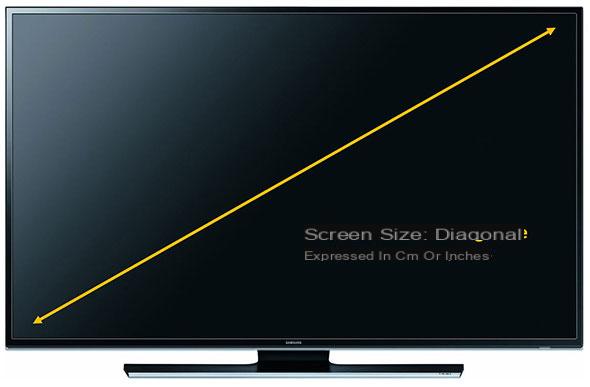
In stores and on the Internet, you will often see the size of televisions displayed in "inches".
While CRT televisions were measured in centimeters, the switch to LCD screens has largely shifted us to a measurement in inches at the instigation of some English-speaking countries still using the inch.
The screen size represents the length of its diagonal, from the upper left corner to its lower right corner (or the other way around).
Knowing this size is important so that you can see how much space the screen will occupy in the room where you want to put it. Or conversely, use the space you have in the room to choose your screen diagonal (we'll come back to that).
Find our comparison of the best 4K TVs
If this measurement is shown in inches and you don't have the conversion, you can do it quickly with your calculator based on these numbers: 1 inch = 2,54cm.
You just have to multiply the size in inches indicated by the dealer by 2.54, and you have your diagonal in centimeters.
Conversely, to measure the diagonal of your current TV, you simply have to measure the diagonal of your screen (still in centimeters) and divide it by 2.54, and you will have the diagonal in inches.
How to calculate the distance from his TV?
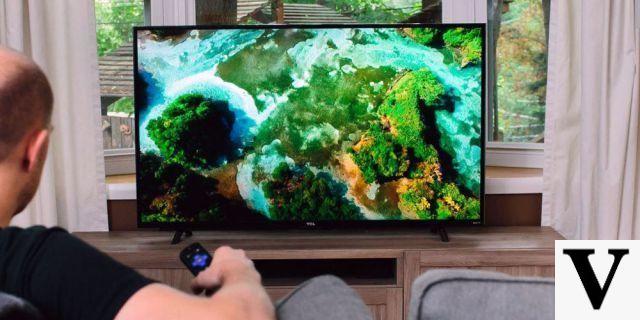
To choose the size of your screen in a simple and efficient way, the most important data is its definition, which will largely determine the pixel density of the images displayed.
The rule that the ideal distance is 3 to 4 times that of your television dates back to the days of CRTs, then 720p (HD Ready) screens. It is therefore no longer really valid.
Today, if you buy a screen with an Ultra HD 4K definition (see 8K), you can afford to be closer to your screen, because your eye will perceive fewer pixels (finer image) than if you choose a Full HD screen for example.
With the democratization of 4K screens, choosing a large diagonal is always a good option for a more immersive experience, but that does not mean that you can stick your head to a 4-inch 50K screen for all that ...
The importance of the field of vision
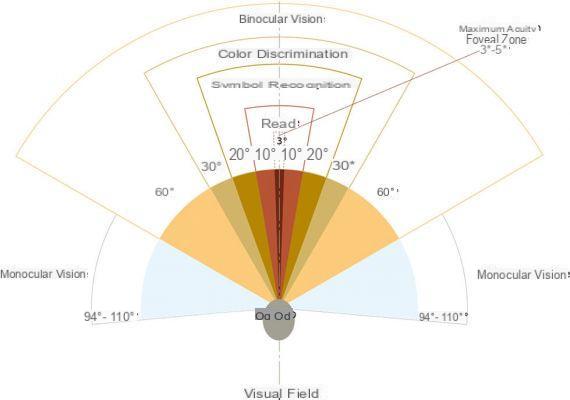
The human eye has a binocular viewing angle of approximately 120 degrees horizontally, but the content we watch on our TV is not made to be viewed with such a wide field of view.
Indeed, for a good recognition of the symbols, a good discrimination of the colors and a better apprehension by our eyes and our brain of the elements displayed on the screen, the ideal field of vision is much more restricted.
For the best viewing experience, the Society of Motion Picture & Television Engineers (SMPTE) recommends that the screen cover 30 degrees of our field of view for most TV programs and sports broadcasts.

This figure rises to 40 degrees for watching films and series for “cinema” use. To take a concrete example, on a 55-inch screen, this represents a distance of 1,7 meters between you and the television.
What is the ideal distance between you and your TV?
To find out the optimal distance, you can proceed in two ways.
The first is to take the size and resolution of your TV to get the optimal distance. Let's use the following table as a guide to give some examples.
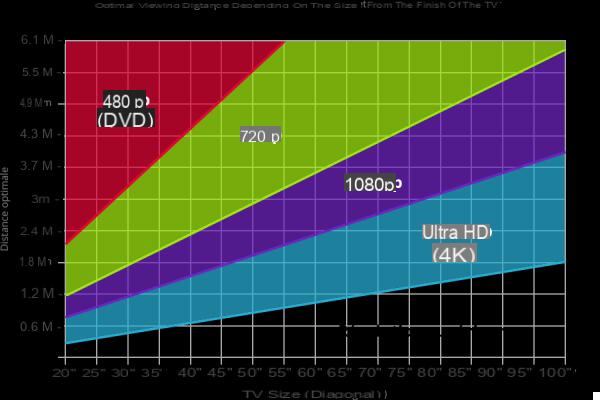
When it comes to calculating the ideal distance, there are as many recommendations as there are TV brands.
If your TV is 4K Ultra HD, Samsung recommends, for example, multiplying the diagonal of your TV by 1,2 to obtain the ideal viewing distance.
- For a 55-inch (140 cm) screen (UHD), the ideal distance is therefore 1,68 meters (140 x 1,2).
- For a 65-inch (163 cm) screen (UHD), the ideal distance is 1,96 meters (163 x 1,2).
If your panel is Full HD, you should rather multiply by 1,6, and therefore move away from the television. The display fineness is less important, you have to move away a little so as not to perceive the pixels and thus less strain your eyes.
- For a 40-inch (100 cm) screen (Full HD), the ideal distance is 1,6 meters (100 x 1,6).
- For a 49-inch (123 cm) screen (Full HD), the ideal distance is 1,97 meters (123 x 1,6).
The second method of calculation is to deduce the ideal size of your screen in relation to the viewing distance.
Take the following example: your sofa is 2 meters from your TV.
Your ideal screen, to obtain an image covering an angle of 40 degrees, will have a diagonal between 49 and 55 inches for a Full HD panel, and between 65 and 75 inches for a 4K screen.
Do not hesitate to refer to the table below to find your way around.
Summary table of recommended distances
The data in the summary table are calculated to obtain a viewing angle of approximately 40 degrees and are only recommendations. You are free to vary this distance according to your feelings and the space you have at home.
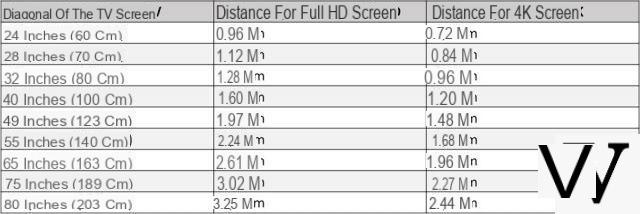 Summary
Summary
- How to choose the size of your TV screen?
- Size, format, definition, resolution: be careful not to confuse
- How to calculate the size of your TV screen?
- How to calculate the distance from his TV?
- The importance of the field of vision
- What is the ideal distance between you and your TV?
- Summary table of recommended distances
- It's your turn
It's your turn
Whether you are looking for the perfect screen for your living room, or just the perfect distance from your sofa to your current screen, you now have all the cards in hand to choose the TV that's right for you.
If you base yourself on the data that we have just seen together, you will quickly see that it is the question of the price that comes back.
Can you, or do you want to spend that much on a 4-inch 75K TV just because your living room allows it?
Because beyond the space you have at home or the definition of the screen, it is ultimately your budget that will help you make your final decision.
Do not hesitate to share with us the diagonal of your TV and the distance you have to view it. As we have seen previously, it remains above all a story of feelings.


























